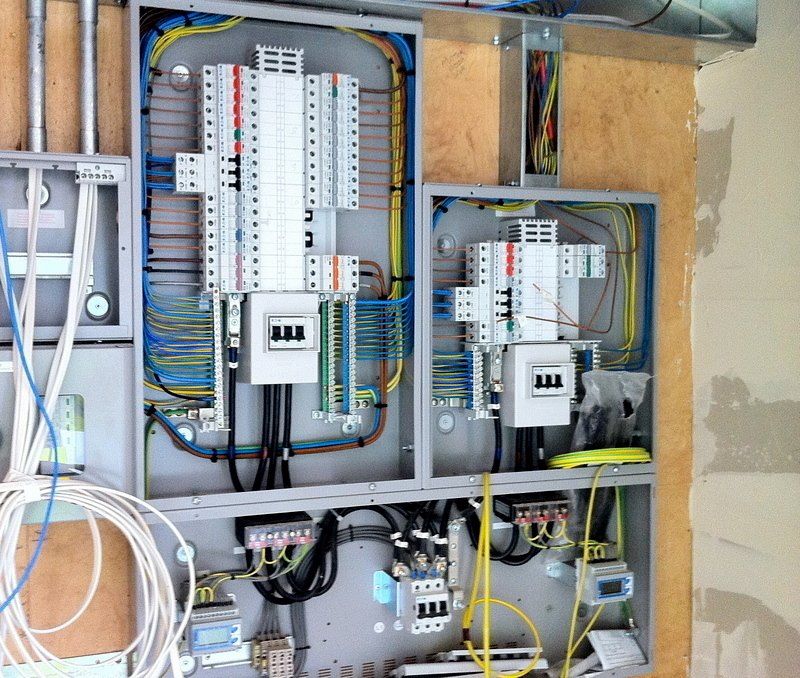Debunking Electric Installment: Understanding Codes and Rules for a Lawful and Safe Setup
In the world of electric installment, adherence to codes and regulations is vital to make sure both legality and safety and security. The complexities bordering electrical work can be challenging, but familiarizing oneself with the recognized requirements is crucial to navigating this field with self-confidence. By understanding the complexities of the National Electric Code and neighborhood building regulations, individuals can assure that their setups satisfy called for precaution and remain in compliance with the law. Nevertheless, the journey to debunking electrical installation goes past simple familiarity with guidelines; it demands a profound understanding of exactly how to carry out risk-free electric techniques successfully.
Relevance of Electrical Codes
The adherence to electric codes is vital in guaranteeing the safety and security and integrity of electric setups. Electrical codes function as a collection of standards and guidelines that dictate the appropriate layout, setup, and maintenance of electric systems. These codes are developed to lessen the threat of electric dangers, fires, and various other safety and security worries that might emerge from damaged electrical job.

Additionally, electrical codes are consistently upgraded to incorporate new technologies, best techniques, and safety and security actions. Staying updated with these codes is important for experts in the electric industry to guarantee that their work satisfies the current safety requirements. Eventually, the value of electrical codes hinges on producing a safe and effective electric infrastructure that profits both individuals and communities.
Secret Rules for Safety
Several essential regulations govern the safety criteria in electrical installations. One key law is the National Electrical Code (NEC), which provides standards for safe electric design, installation, and inspection to protect people and building from electrical threats. The NEC covers facets such as circuitry approaches, grounding, overcurrent security, and tools setup to make sure a risk-free electrical system.
One more crucial policy is the Occupational Safety and Health And Wellness Administration (OSHA) requirements, which concentrate on the security of employees associated with electric setups (BRE Electrical Solutions). OSHA policies include demands for proper training, safety procedures, and individual protective tools to stop work environment mishaps and injuries
Moreover, the International Electrotechnical Payment (IEC) standards intend to balance electrical setup guidelines on a global scale. These requirements address issues like electric tools security, electro-magnetic compatibility, and energy efficiency to promote harmony and safety and security in electrical setups worldwide.
Conformity with these vital policies is important to make certain the safety and legality of electric installments, securing both people and residential property from the dangers connected with power.
Recognizing National Electric Code
Key guidelines such as the National Electric Code (NEC) offer essential guidelines for risk-free electrical design, installation, and assessment to make certain the defense of people and building from electric threats. The NEC, additionally understood as NFPA 70, is a detailed collection of standards for electrical installments that are upgraded every 3 years. It is developed by the National Fire Defense Organization (NFPA) and is extensively taken on across the USA.
The NEC covers various elements of electric work, consisting of wiring methods, grounding, overcurrent security, and equipment setup. It intends to secure individuals and building by dealing BRE Services with possible risks connected with electrical systems. Compliance with the NEC is commonly implemented by neighborhood authorities having jurisdiction (AHJs), such as building code officials and assessors.
Comprehending the NEC is crucial for electric professionals, developers, and assessors to make certain that installations satisfy the necessary security needs. By adhering to the NEC standards, professionals can help stop electric crashes and guarantee the integrity of electrical systems in domestic, commercial, and commercial setups.

Compliance With Regional Building Regulations
Comprehending and adhering to neighborhood structure codes is essential for guaranteeing the safety and compliance of electrical setups within a details jurisdiction (BRE Electrical). Regional building regulations differ from one town to an additional, and they are put in place to guard the wellness of occupants and properties. These codes lay out particular demands for electric installations, such as the sort of electrical wiring to be used, placement of electrical outlets, basing techniques, and tons capabilities. By following local building codes, electrical experts can ensure that installations are done correctly and meet the necessary security requirements.
When it comes to electric installments, failing to comply with neighborhood structure codes can result in severe repercussions. Non-compliant setups might posture safety and security risks, enhance the threat of electrical fires, and lead to expensive fines or legal issues.
Making Certain Safe Electrical Practices
Practicing strict adherence to developed safety and security protocols is crucial in the field of electric installments to alleviate prospective risks and guarantee the well-being of people and properties. Safety in electric work incorporates various elements, beginning with the correct training of personnel involved in setup, maintenance, and repair service. By prioritizing safe techniques, electric setups can work effectively while lessening the probability of mishaps or damage.
Conclusion
Finally, adherence to electric codes and policies is vital for making certain the safety and legality of electrical installments. Comprehending the National Electric Code and compliance with neighborhood structure codes are vital for a safe arrangement. By complying with these guidelines and exercising secure electric practices, individuals can stop prospective threats and make sure the proper functioning of their electric systems.